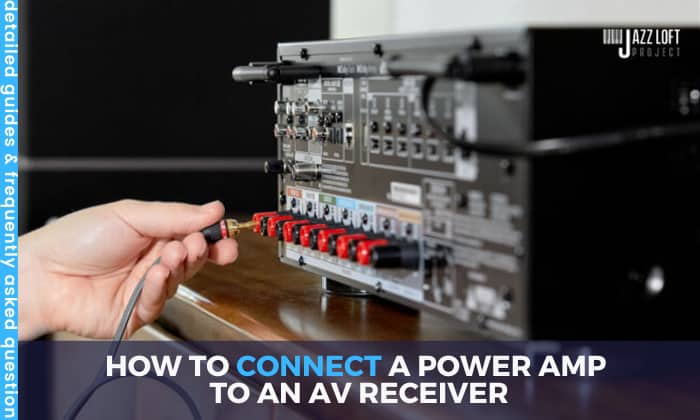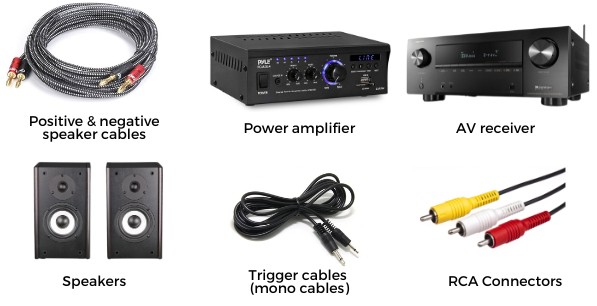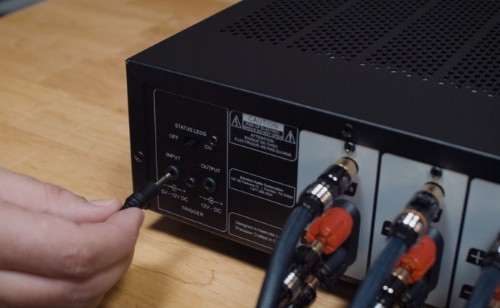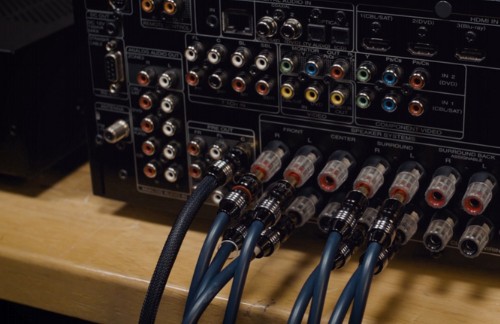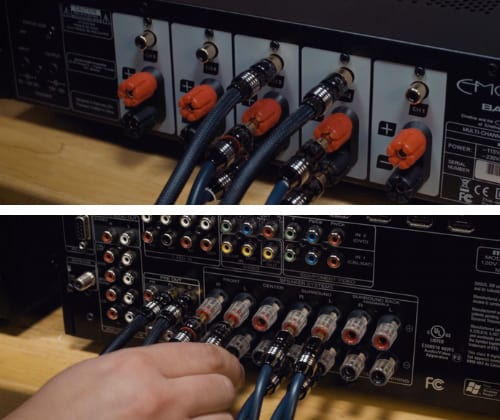It must be frustrating to hear audio or music not as loud as you want it to be or to watch a movie with disappointing sound quality.
The good thing is companies like Sony and Yamaha produced AV receivers that we all need to produce a better volume.
This guide on how to connect a power amp to an AV receiver will help you learn the proper ways to use your equipment together to achieve the home theater experience you need.
Table of Contents
Ways to Connect a Power Amp to an AV Receiver
We all know AV receivers are brilliant devices for boosting weak signals, but these tools sometimes don’t have enough built-in amplifiers to process their channels.
In this case, adding another power amp is a good way to improve your audio quality. We’ll show you how to do just that below.
What to prepare:
- Positive and negative speaker cables
- Power amplifier and AV receiver
- RCA Connectors (red and white cables are for audio, and yellow is for video)
- Speakers
- Trigger cables (mono cables)
1. Put a Tag on Each Cable Wire.
Connecting an amplifier to a receiver will require you to plug various wires into cable ports. To avoid confusion, label each wire we listed above.
2. Start by Unplugging the Wires.
Before you hook up an amplifier to a receiver, ensure that everything is unplugged so that no power runs through the cables.
This practice will keep you and your equipment safe from any electrical damage.
3. Plug the Trigger Wires to the Amplifier and AV Receiver.
Attaching trigger wires to both the external amplifier and the AV receiver will help you activate and deactivate both devices without turning them on and off separately.
All you have to do is plug one end of the trigger wire into the power amplifier’s trigger jack and connect the other end to the AV receiver’s port.
4. Plug the RCA Connectors to Both Equipment.
Now that you have connected the trigger wires to both devices, the next step is to plug the RCA connectors into both.
For adding an amp to a receiver, find the AV receiver’s output and plug the one end of the RCA cable for audio into it. Then, insert the other end into the power amplifier’s input.
Match each RCA cable to a pre-out on the receiver and a corresponding speaker input on the power amp.
Afterward, ensure the power amp is set to an unbalanced connection, as some devices have ‘balanced’ and ‘unbalanced’ settings.
5. Connect Speakers to Amplifiers.
Since speakers to amplifiers get activated by connecting the speaker wires to the amp, input the correct type of wire to the amplifier’s jacks.
Plug in the positive connector to the positive jack and the negative connector to the negative jack.
Speaker 1 should be connected to Speaker 1’s jack, and Speaker 2 should be connected to its designated jack. Joining opposite wires in incorrect jacks will make them not work.
Making Your Own Pre-outs
What if your receiver has no preouts? Connecting a power amplifier to an AV receiver without pre-outs will require you to do some modifications to create these parts.
- Turn off and open your receiver to see the line-level signal circuits, which can be found around the internal processor area and amp modules.
- Snip off the circuit.
- Add switches to switch between the bypass and internal circuit options.
For receivers with a surround sound decoder, it’s possible to use a line-level converter to convert the speaker signals. Essentially, the converter will reduce the speaker output so that it doesn’t overload the power amp.
This method is less complicated than creating your own pre-outs, but the sound quality won’t be as impressive.
Conclusion
Now that you know how to connect a power amp to an AV receiver, you can successfully set up these devices for home theater and get the theatrical experience you need under the comfort of your own roof!
Ensure to connect your trigger wires and RCA connectors to both the power amplifier and AV receiver, and connect speaker wires to the amp to make these steps successful.
For an easier setup, put labels on each wire so you won’t get confused. Click this video to see the actual steps!

Sam Stephenson is a writer who grew up in Washington, North Carolina. He was 2010 and 2015 ASCAP Deems Taylor / Virgil Thomson Prize winner and a 2019-2020 Guggenheim Fellow in General Nonfiction. His books have been published by W.W. Norton, Alfred A. Knopf, and Farrar, Straus and Giroux
